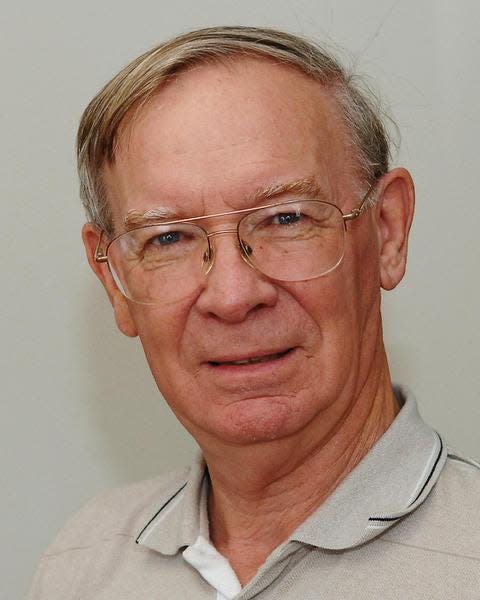How Orson Welles' 'War of the Worlds' scared America on Halloween
“This evening is Halloween,” the Middletown Transcript reported in 1868, “the time when mischievous boys play their pranks by pulling up cabbages, and removing signs, gates, steps, boxes or whatever else they can lay their wanton hands upon.”
Thankfully, pulling up cabbages and other pranks have faded away as the celebration of Halloween evolved. A descendant of a Dagsboro resident, however, managed to scare the wits out of millions of Americans in an otherwise carefully orchestrated production that got out of hand and added a new wrinkle to Halloween.
During the late 19th century, the celebration of Halloween passed from the childhood pranks to more adult activities. Many communities held masquerade balls where prizes were given for the best costumes. In addition, towns staged Mardi Gras-style parades that had bands, floats, and scores of individual revelers.
According to the Wilmington Evening Journal, the 1900 Halloween parade included platoon of police, firemen, workers and fraternal organizations, assorted bands and the Wilmington Bicycle Club. The parade was expected to attract “at least 2,000 persons attired in every conceivable kind of grotesque costume.”
The coastal communities staged similar parades on a smaller scale. In 1915, the Evening journal reported, “The committee in charge of the Hallowe’en parade at Lewes reports that they expect to have one of the largest Hallowe’en parades ever held in the old town. They have already entered over 100 decorated automobiles, 20 floats, 4 lodges, 4 fire companies and many other organizations. Music will be furnished by the Laurel, Millsboro and Lewes bands.”
In 1933, the Milford Chronicle noted, “Milton’s annual Hallowe’en parade drew a large crowd of spectators and hundreds of masqueraders. The parade formed on Broad Street and passed through the business center of the town. Passing the judges’ stand in front of Hopkins Garage, prizes were given for best comical masked man or woman, best clown, best dressed ghost and other categories.
Yes, Orson Welles' family has roots in Delaware
Five years later, however, the descendant of a Dagsboro resident caused an uproar across the country.
After the American Revolution, William Wells married Elizabeth Aydelott, the adopted daughter of Gen. John Dagworthy. After a moderately successful career in politics, Wells passed away in 1829.
One of the couple’s sons moved to Pennsylvania, and as the family migrated farther westward, they added a second “e” to their name. In 1915, Richard Welles was living in Kenosha, Wisconsin, when his second son, George, was born.

George was a bright young man who loved acting, and he became interested in radio. By 1938, he headed the Mercury Theatre on the Air, which was broadcast nationwide.
On the night before Halloween, George’s program began with the song “Star Dust,” but the music was interrupted by a report of a strange astronomical occurrence in the vicinity of the planet Mars. In quick succession, a series of accounts described the landing of an alien space craft in New Jersey. Some listeners believed that the Earth was being invaded by Martians.
The Halloween broadcast, The War of the Worlds, frightened millions of people across America. George Welles, who by now went by his middle name, “Orson,” added space aliens to the ghosts, hobgoblins and witches that appear every Halloween.
Principal sources
Middletown Transcript, Oct. 31, 1868.
The Morning Herald, Nov. 1, 1878.
Evening Journal, Oct. 31, 1898; Oct. 29, 1900; Oct. 29, 1915.
Milford Chronicle, Nov. 3, 1933.
Charles Higham, Orson Welles, The Rise and Fall of An American Genius, New York: St. Martin’s Press, pp. 14-31.
This article originally appeared on Salisbury Daily Times: Orson Welles and the alien invasion that scared America on Halloween
